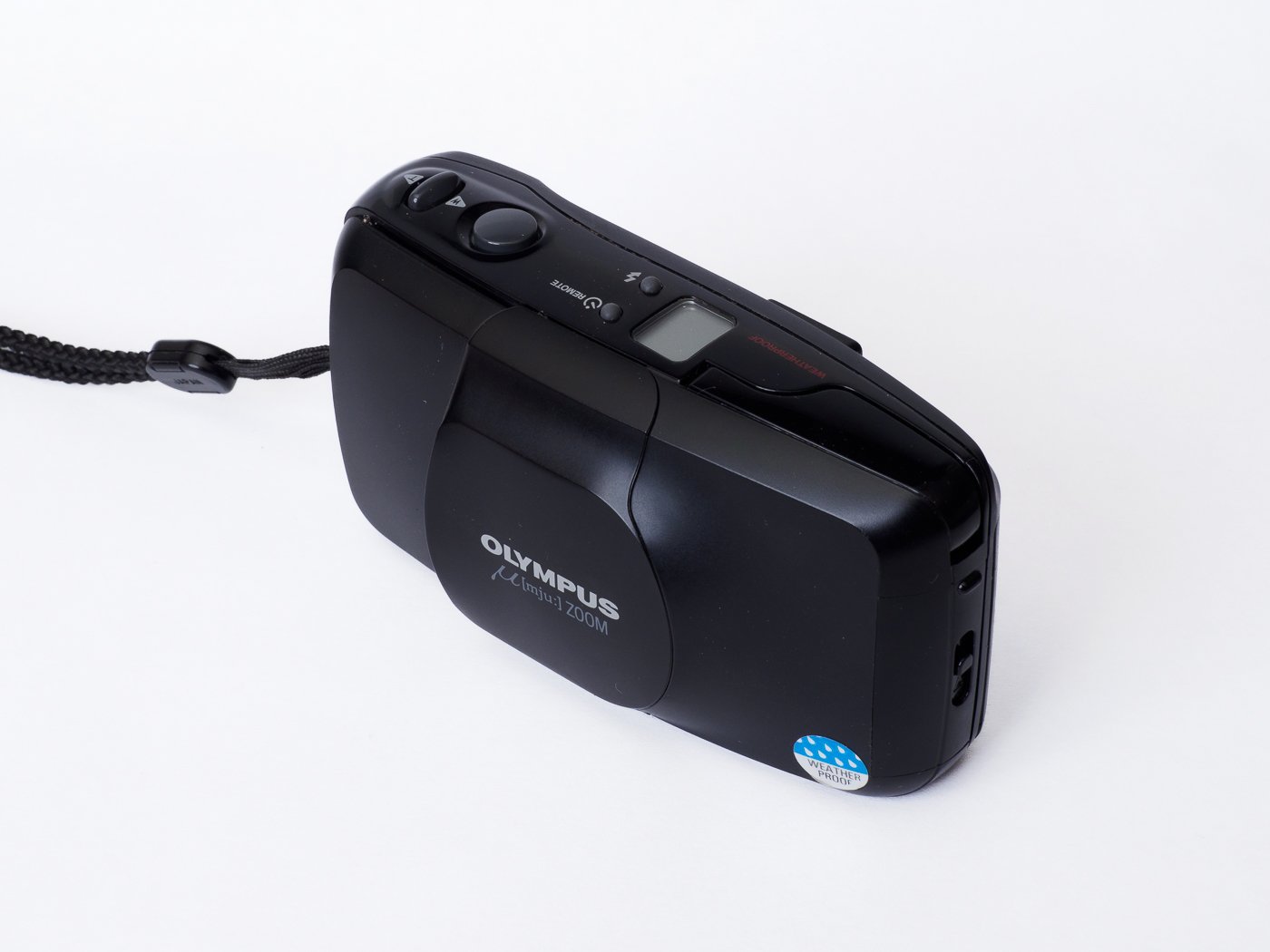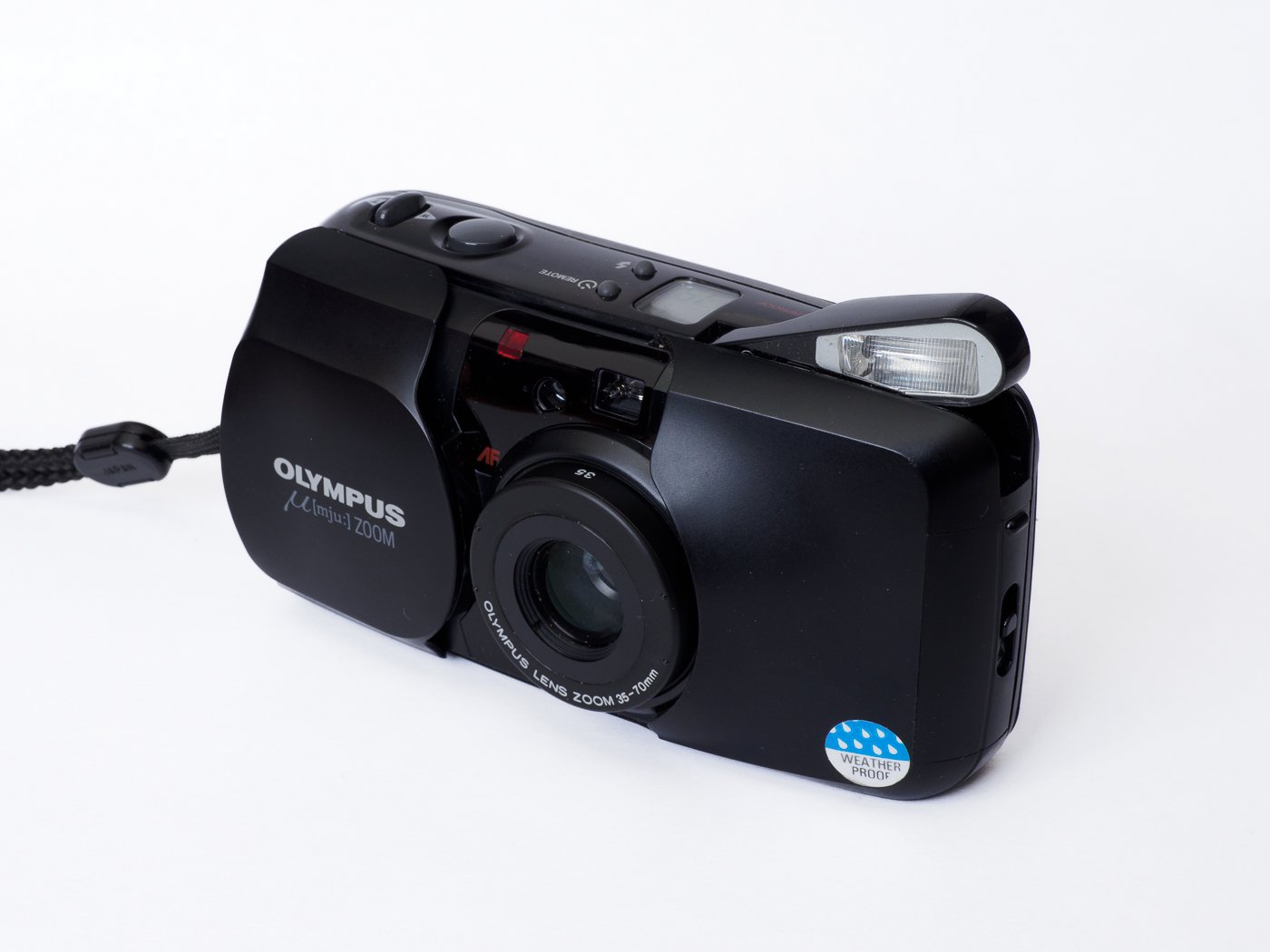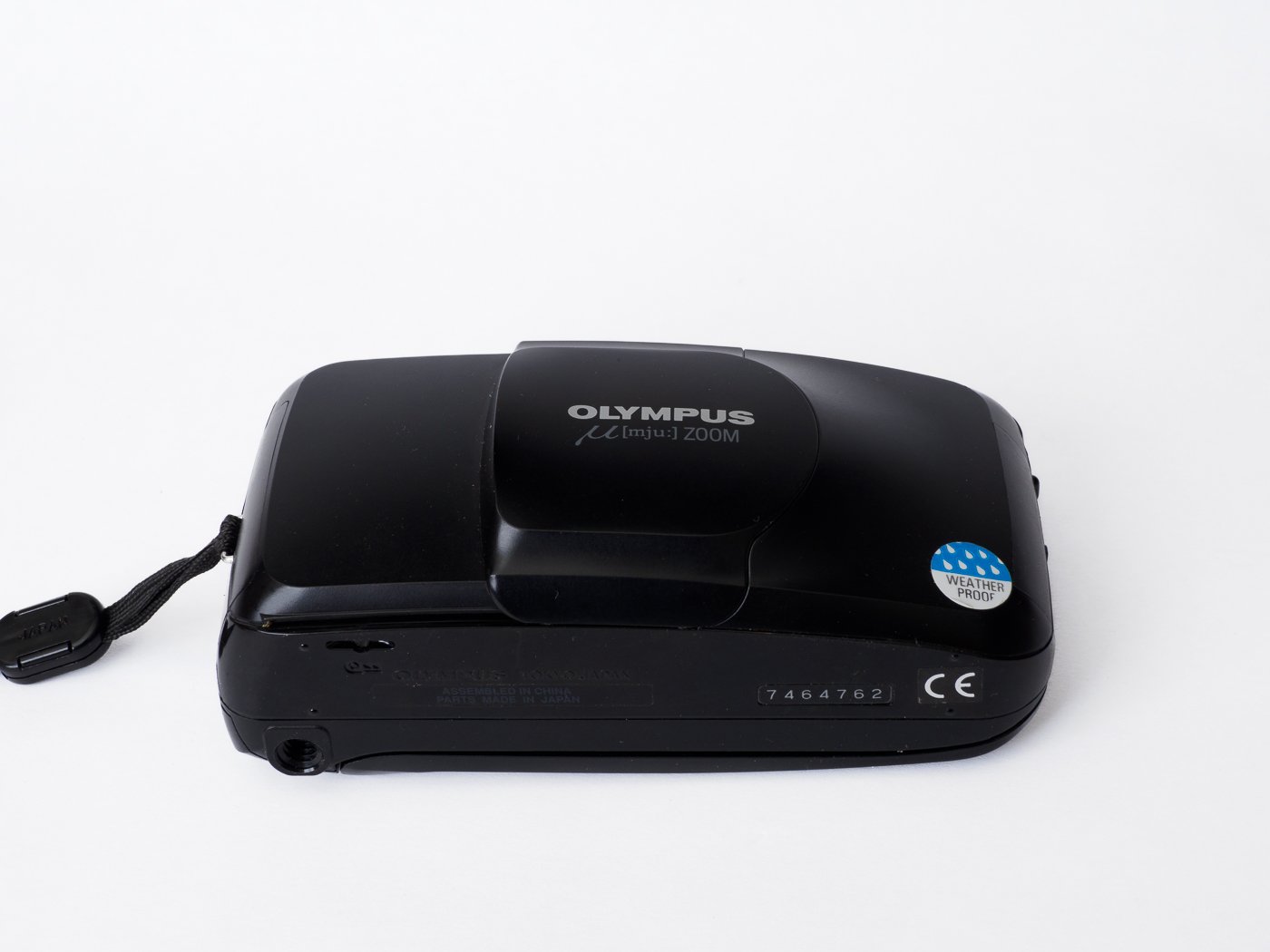Film weekend pt 3 - Olympus mju zoom
Continuing my weekly project of putting a film through each camera in my collection (in turn), this weekend I broke out a fresh roll of TMax-100 and loaded it up into my Olympus Mju Zoom.
Olympus Mju Zoom
I bought this camera back in 2013 when my camera collection was just starting - in those days the goal of the collection was to try to re-purchase a copy of any camera that I had once owned, used, and enjoyed. I had a mju for a while back in the 1990’s, and used it as my travel/carry anywhere/point and shoot camera, and had fond enough memories of it and the shots from it to want to get a replacement for my collection. So off to eBay I went and paid the princely sum of £4.99 for a mint-condition example complete with original case. Those were the days.
I picked this camera for this weekend’s film project by way of contrast with the fully manual shooting I had done the previous two weekends with the 35RC and the Rollei 35 - this camera features auto everything. Auto film load (and rewind), auto focus, auto exposure, auto flash… The user controls are limited to zooming and overriding the flash mode, and half-pressing the shutter to lock focus (and exposure?).
This is the original model, with 35-70 zoom lens (whether that’s the exact same model that I owned back in the ‘90s I’m afraid I don’t remember - but it certainly feels very familiar).
Right from the start, I seemed to be fighting the camera. Getting it to grab the film to auto-load it took 4 attempts (though to be fair, it was very good at reporting that it had not worked). The flash is strong enough to generate complaints from my subjects, even in “fill” mode - and has to be turned off manually every time the camera is opened. Pressing the pop-up flash back down might be expected to turn off the flash, but no, it turns off the whole camera, and if you happen to have your finger over the flash when you open the camera to turn it on, then it’s going to turn right back off. The viewfinder is pretty small, and never seemed to be where my eye expected to find it when raising the camera for a shot. But I think the most annoying thing about the camera is the complete lack of feedback about what settings it might have selected for you.
I guess I’m just used to more manual/enthusiast-level cameras where knowing your shutter speed and aperture are second nature, and while I didn’t necessarily expect to be able to override the auto settings on a camera like this, some kind of hint about what shutter speed it was going to use before taking a shot would have been helpful. I suppose had I left the flash in auto mode I might have had fewer blurry photos… and maybe 400asa film would have been a better match too.
I haven’t finished the film yet (that in itself may something about how (un-)inspired I was by this camera - when I do I expect another issue to surface, in that the auto-rewind will probably not leave a tail for me to use when loading the film for development. I was thinking of sending some films away to be processed professionally to see how that compares with the results from my home developing, so perhaps this film will be the first candidate for that. Or I can try to make a widget for pulling film headers out of canisters - I don’t suppose it’s that hard. Back in the 1970’s when I developed a lot of film I used to be good at opening film canisters in the dark, but newer canisters seem to be a lot harder, and now that I have an Agfa Rondinax to do all my developing without any darkroom, having the film leader left out on rewinding makes life a lot easier.
So, I guess the jury is still out until I see the photos, but at the moment this camera is my least favourite of any I have used in this project so far, and the only one where I am seriously wondering whether I should sell it. Especially when I looked on eBay to see what they are going for these days - I wish I had bought more film cameras back in 2013!





